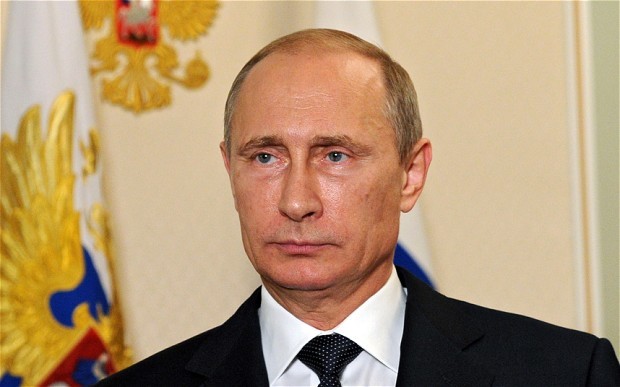5 Ways Ukraine could affect
Post on: 13 Май, 2015 No Comment

QuentinFottrell
Reuters
A military personnel member, believed to be a Russian serviceman, stands guard on a military vehicle outside the territory of a Ukrainian military unit in the village of Perevalnoye outside Simferopol March 3, 2014.
The longer the outcome in Ukraine remains uncertain, the more likely the crisis will have an impact on people living thousands of miles from Crimea. On Tuesday, Russian President Vladimir Putin said he still reserved the right to use force in Ukraine, calling the ousting of the pro-Russian former President Viktor Yanukovych an “unconstitutional coup.”
The resolution—or lack of resolution—could have economic ripple effects across the planet. “This could be the biggest crisis since the Cold War,” says Mark Grant, managing director at Southwest Securities in Dallas. The worst case scenario—a full-scale war—“would ratchet up the price of oil, gold and other commodities,” he says.
Here are 5 ways Americans could be affected.
As word spread that Russian troops were blockading Ukrainian military facilities, the U.S. dollar and Japanese Yen both increased in value. The reason: Europe’s energy supplies are more directly affected by trade sanctions against Russia, so some Asian and European investors were buying U.S. dollars. A strong dollar means U.S. tourists can buy more foreign goods and services with the same amount of U.S. dollars in their back pocket. “Although the currency markets certainly reacted to events in Ukraine this week, perhaps the most notable feature was how modest the moves proved to be,” says Derrick Simon, chief currency strategist at BNY Mellon, an investment management and investment services company based in London. “Whether this optimistic viewpoint was justified remains to be seen.”
The price of gold for April delivery reached a four-month high on Monday, rising around 2% to $1,353.80 an ounce on the COMEX division of the New York Mercantile Exchange, but retreated on Tuesday after Putin said he would only use force as a last resort. Gold for April delivery, the most active contract, fell $12.40, or 0.9%, to end at $1,337.90 a troy ounce on the Comex division of the New York Mercantile Exchange. If the region moves toward a full-scale conflict and skittish investors pull their money out of the stock market and look for safer places, however, analysts expect the price of gold bullion to soar. Even before the crisis, most analysts expected a bumpy ride for gold this year after consumer demand for gold jewelry, bars and coins hit record levels in 2013, according to Ole Hansen, head of commodity strategy at Saxo Bank in Denmark. The good news: The rise in the stock market on Tuesday indicates that a lot of people believe that this crisis will pass, Grant says, and many investors are not changing their investment outlooks. But U.S. Secretary of State John Kerry is not so sure: “I think that it is clear that Russia has been working hard to create a pretext for being able to invade,” Kerry told reporters after meeting with Ukraine’s new Western-backed interim leadership in Kiev on Tuesday.
Oil and natural gas prices
Both oil and natural gas prices could climb even higher if the conflict escalates, says Dr. Paul Sullivan, an energy and economic expert who teaches at Georgetown University; for consumers, this could mean higher heating and gasoline costs. “Russia is one of the world’s largest oil and gas producers, supplying Western Europe with about a quarter of its natural gas,” explains IBISWorld analyst Dmitry Diment. “A significant portion of this supply is piped through Ukraine.”

While Sullivan says that Europe might get hit hardest on natural gas prices, since roughly one-third of its gas comes from Russia, the impact could be felt globally too, he says. And higher natural gas prices in Europe and Asia could increase the prices of things Americans import that are manufactured with the help of natural gas, such as cars, foods (fertilizer is often made from natural gas), and high tech goods from Germany and Japan, says Sullivan.
Already, Ukraine tension is helping spur rising oil prices: On Monday, U.S. crude prices rose $2.33 higher to $104.92 a barrel, the highest level in more than five months on Ukrainian concerns, and fell $1.90 lower to $109.30 on Tuesday after Russian troops were ordered back to their bases following a series of military exercises. But these events over the last two days show that oil prices are susceptible to any news that could potentially disrupt the global oil supply.
Ukraine is a major exporter of wheat, corn and barley, so further conflict in the area could mean somewhat higher prices on bread, crackers, corn-based products, soups and some other items, says Sullivan. U.S. wheat futures and prices jumped this week due to concerns of conflict in the Black Sea, one of the world’s key regions for the export of wheat and grain. “Export demand for U.S. corn and wheat would push domestic prices for those up,” says Corinne Alexander, associate professor at the Department of Agricultural Economics at Purdue University in West Lafayette, Ind. But, wheat only contributes 20% to the cost of a loaf of bread, so it would take a large spike for consumers to see an impact, Alexander says. On Monday, U.S. wheat futures for May delivery rose 4.9% to $6.315 a bushel on the Chicago Board of Trade, the largest jump since September 2012, and then rose again on Tuesday.
Sunflower Oil
Most Americans don’t think much about sunflower oil but it’s used to make quite a few things that you might enjoy, including some types of biscuits, cream fillings, chewing gum, tomato sauces, and salad dressings. Since Ukraine is the world’s largest producer of sunflower oil, an escalating conflict in the country could send the prices for sunflower oil upward, says Sullivan. India could be one of the hardest hit on this given their heavy use of sunflower oil, but U.S. consumers may also see an uptick in prices of some processed goods that use sunflower oil, Sullivan says.














